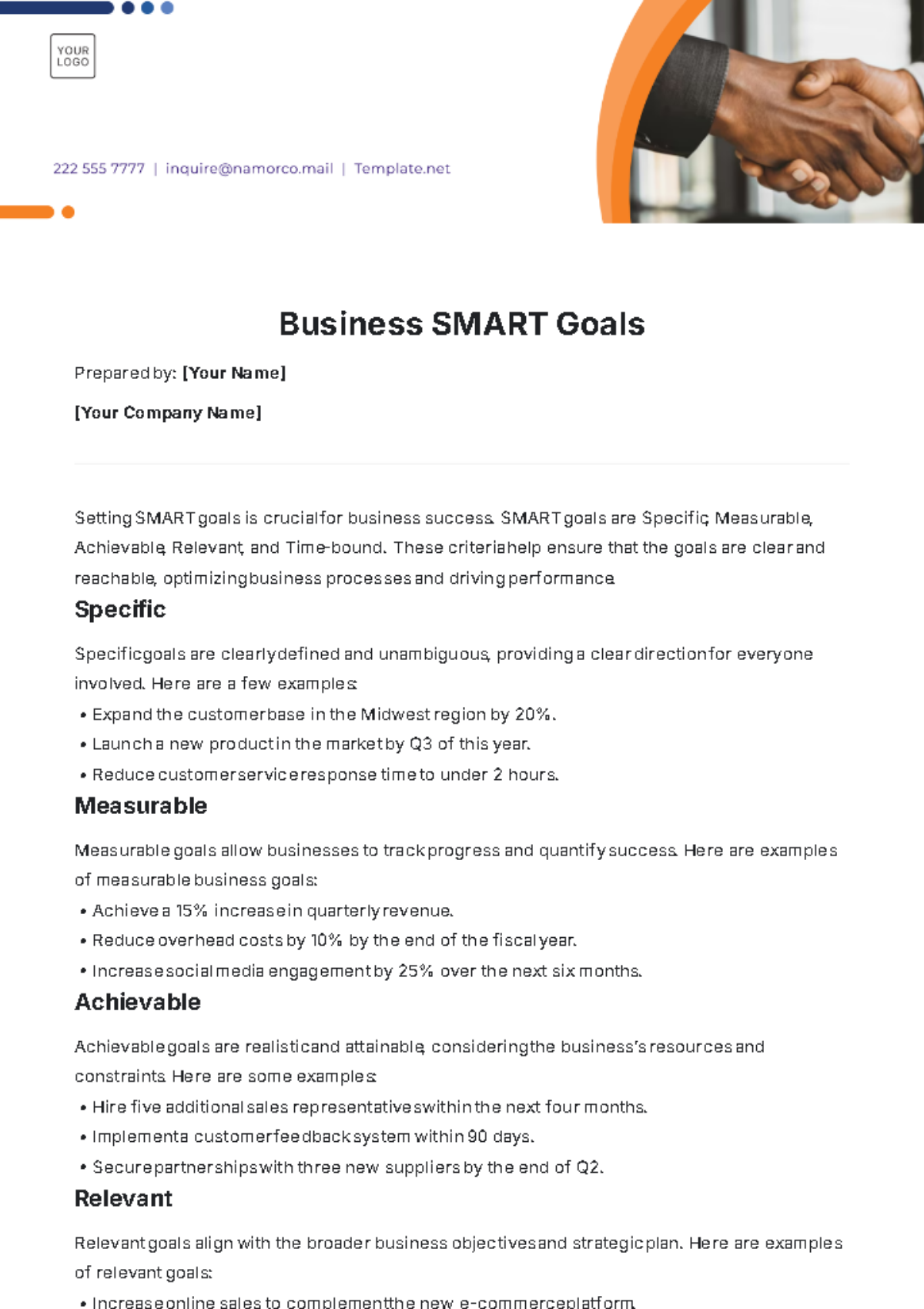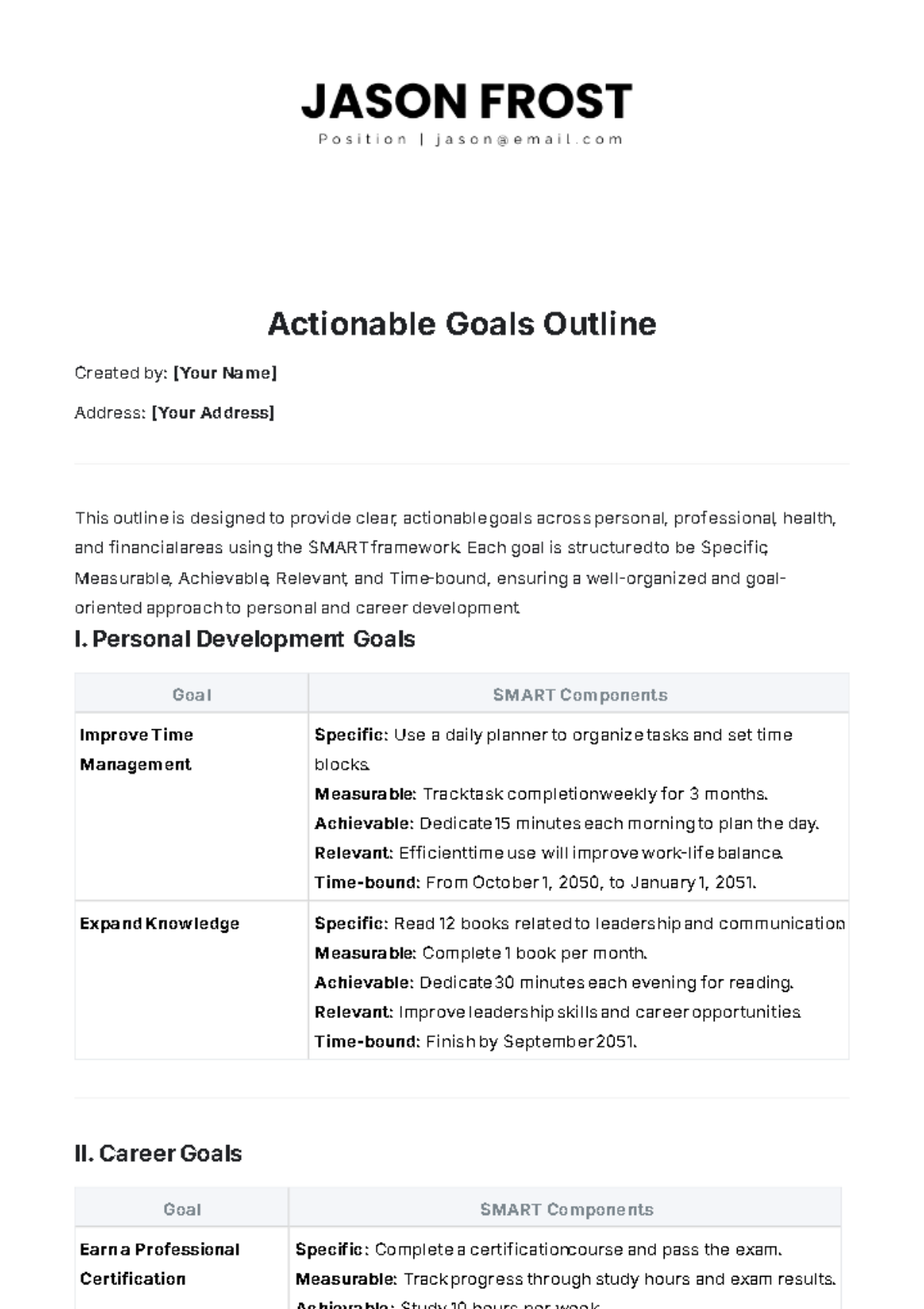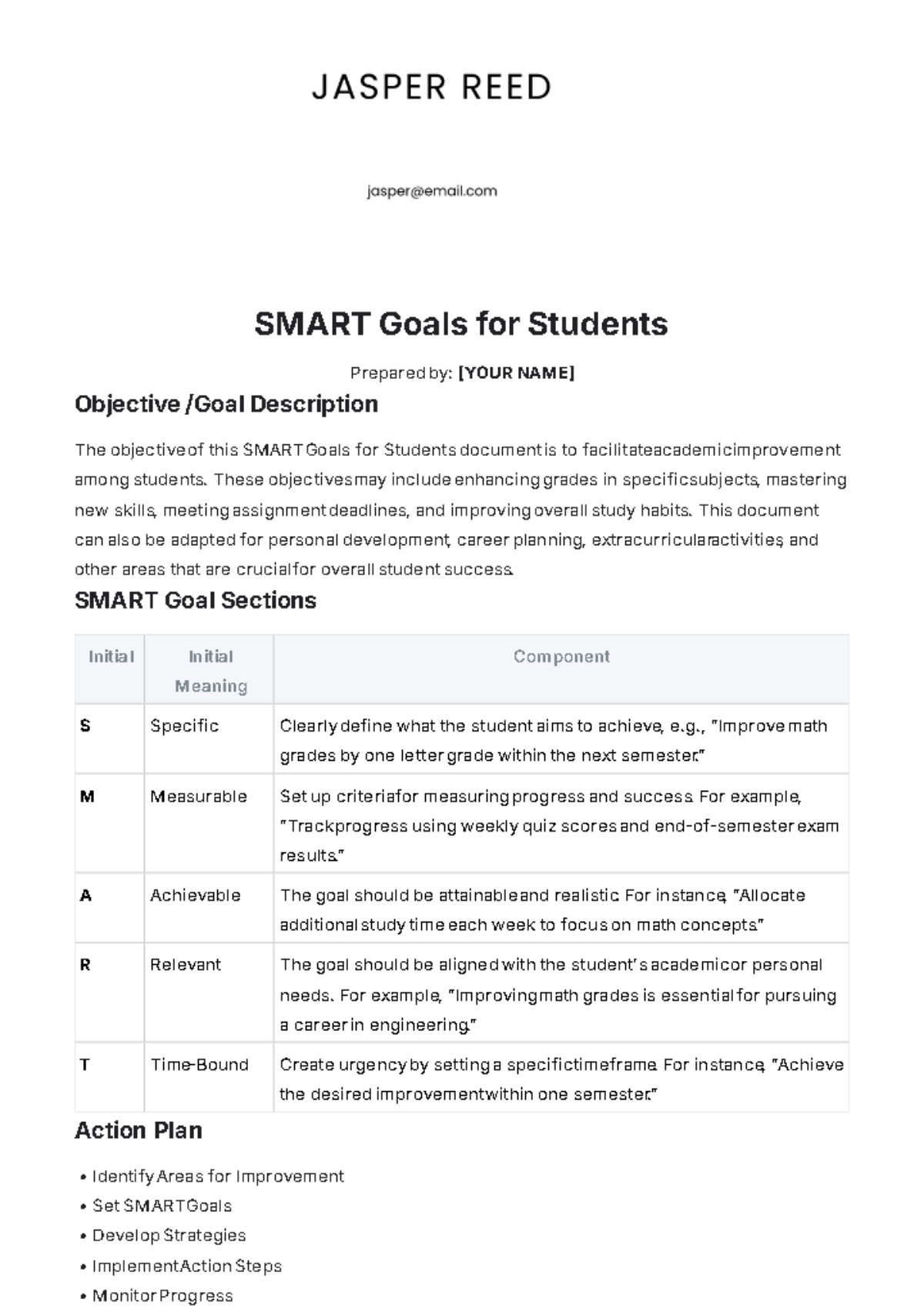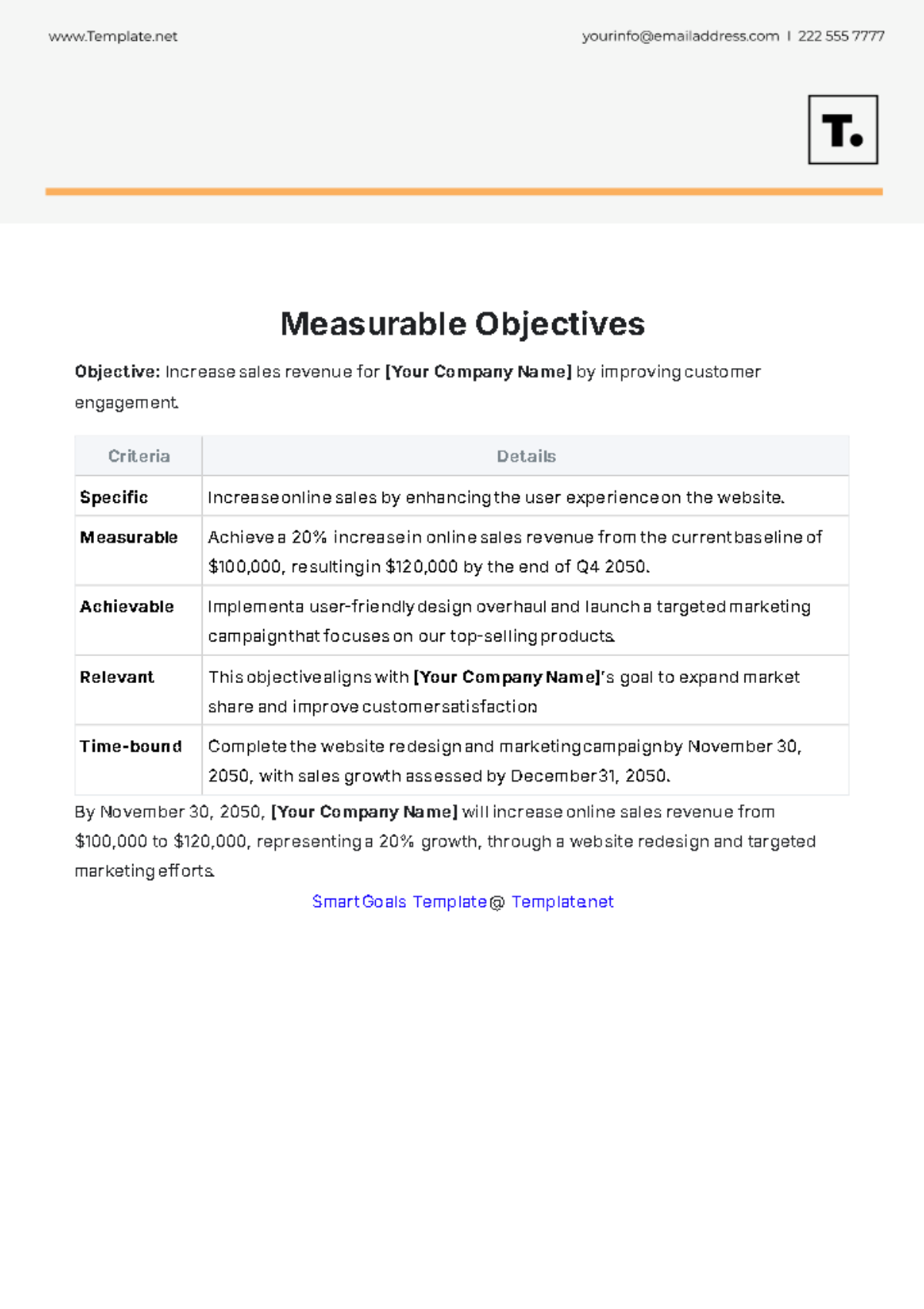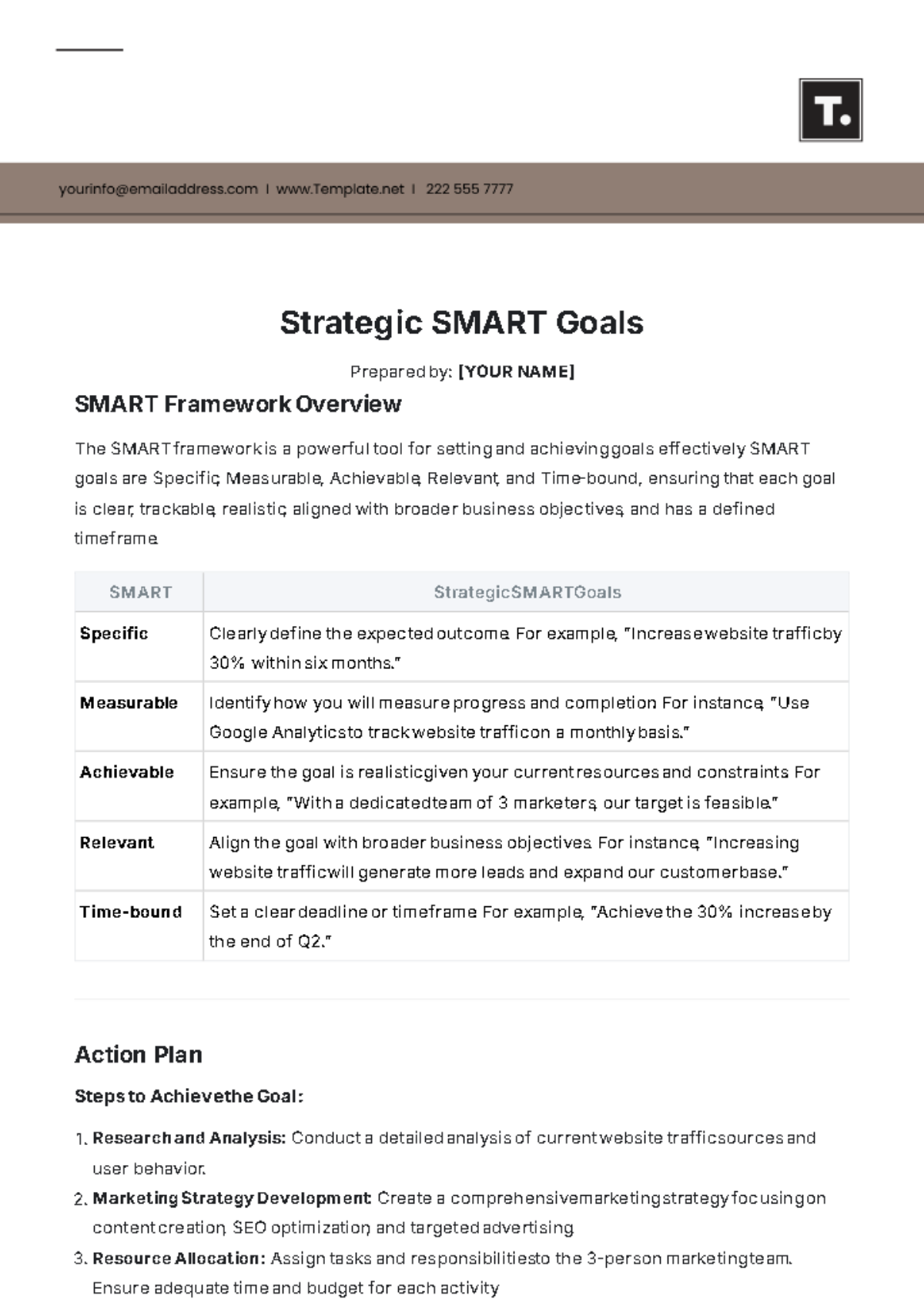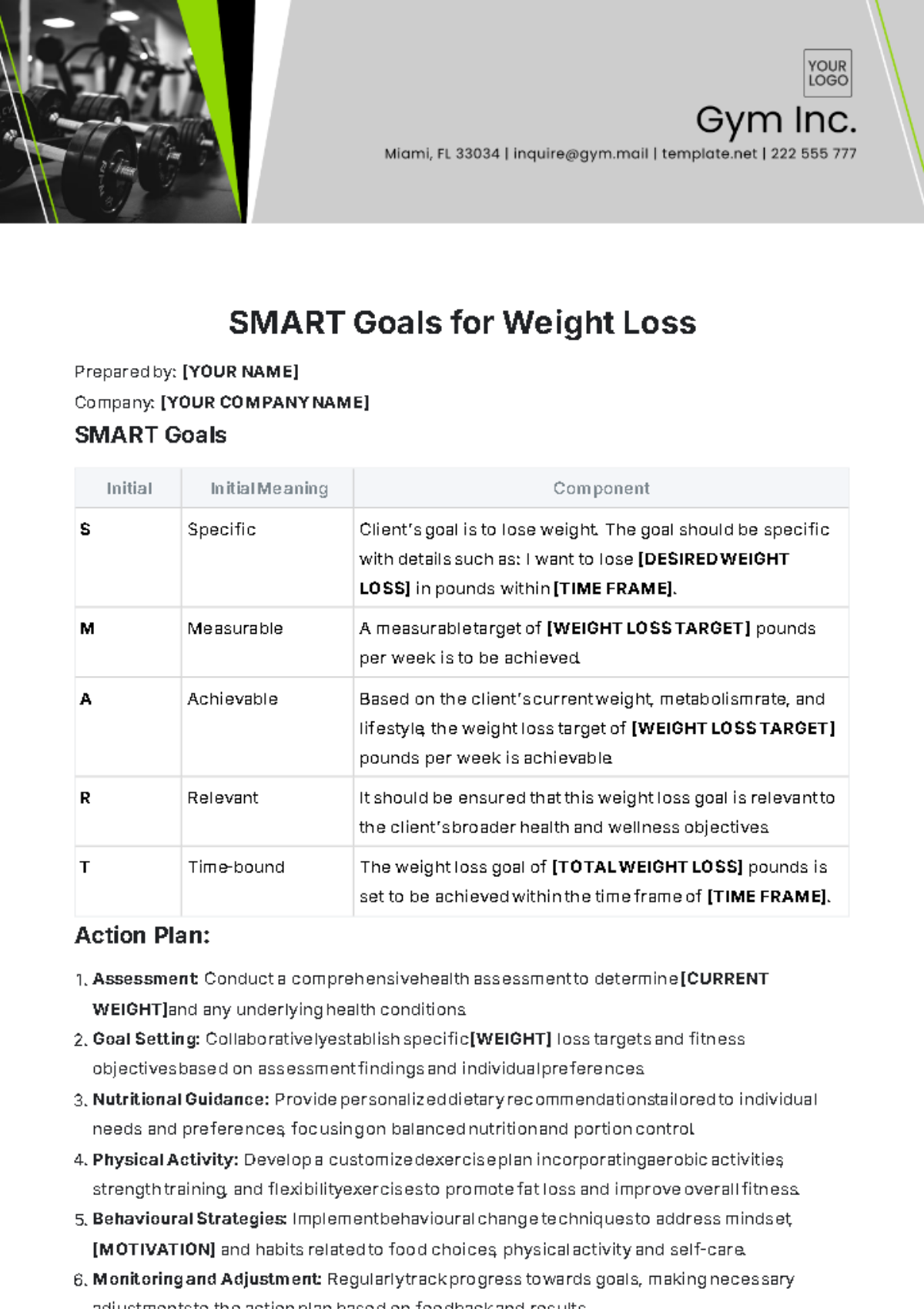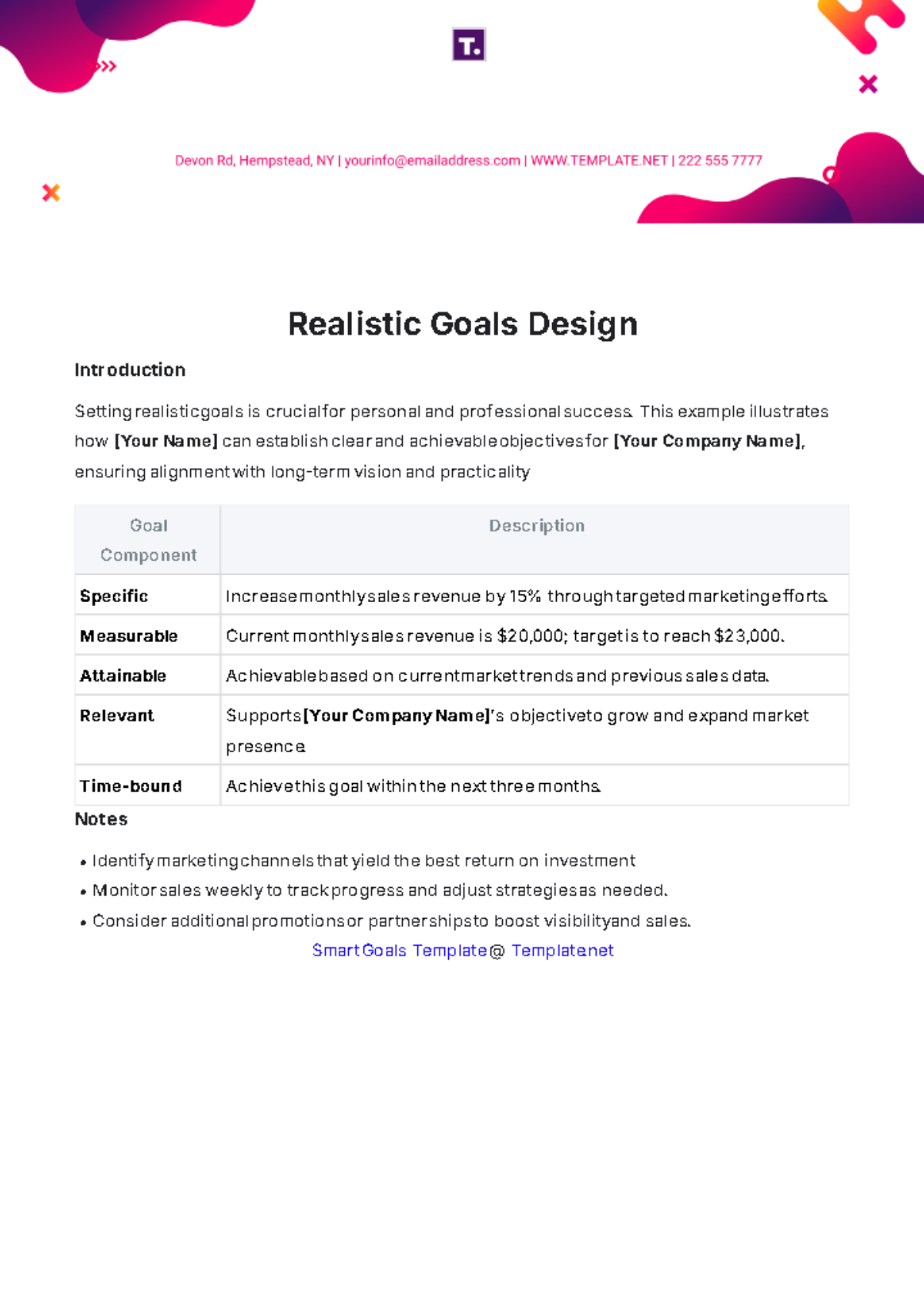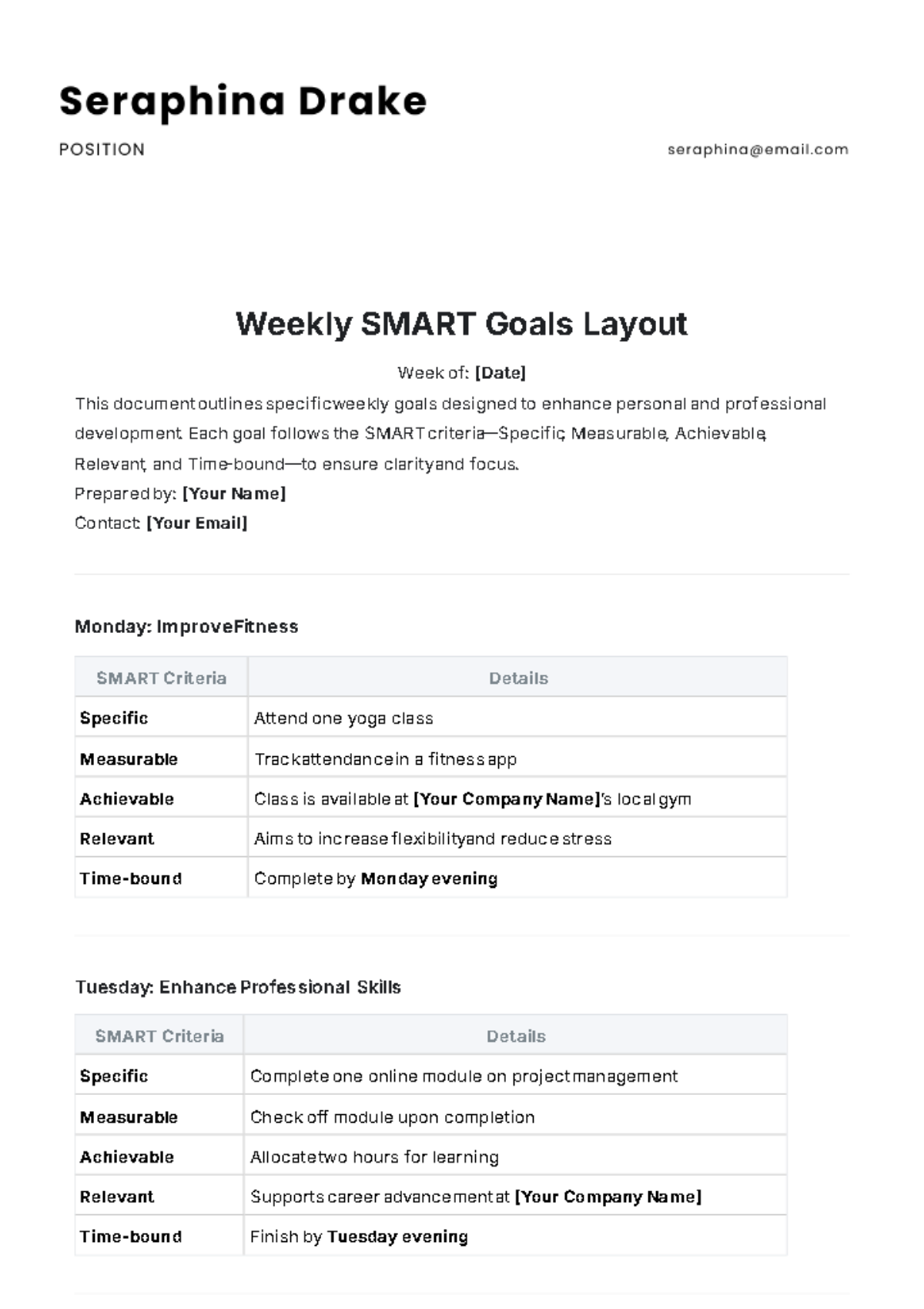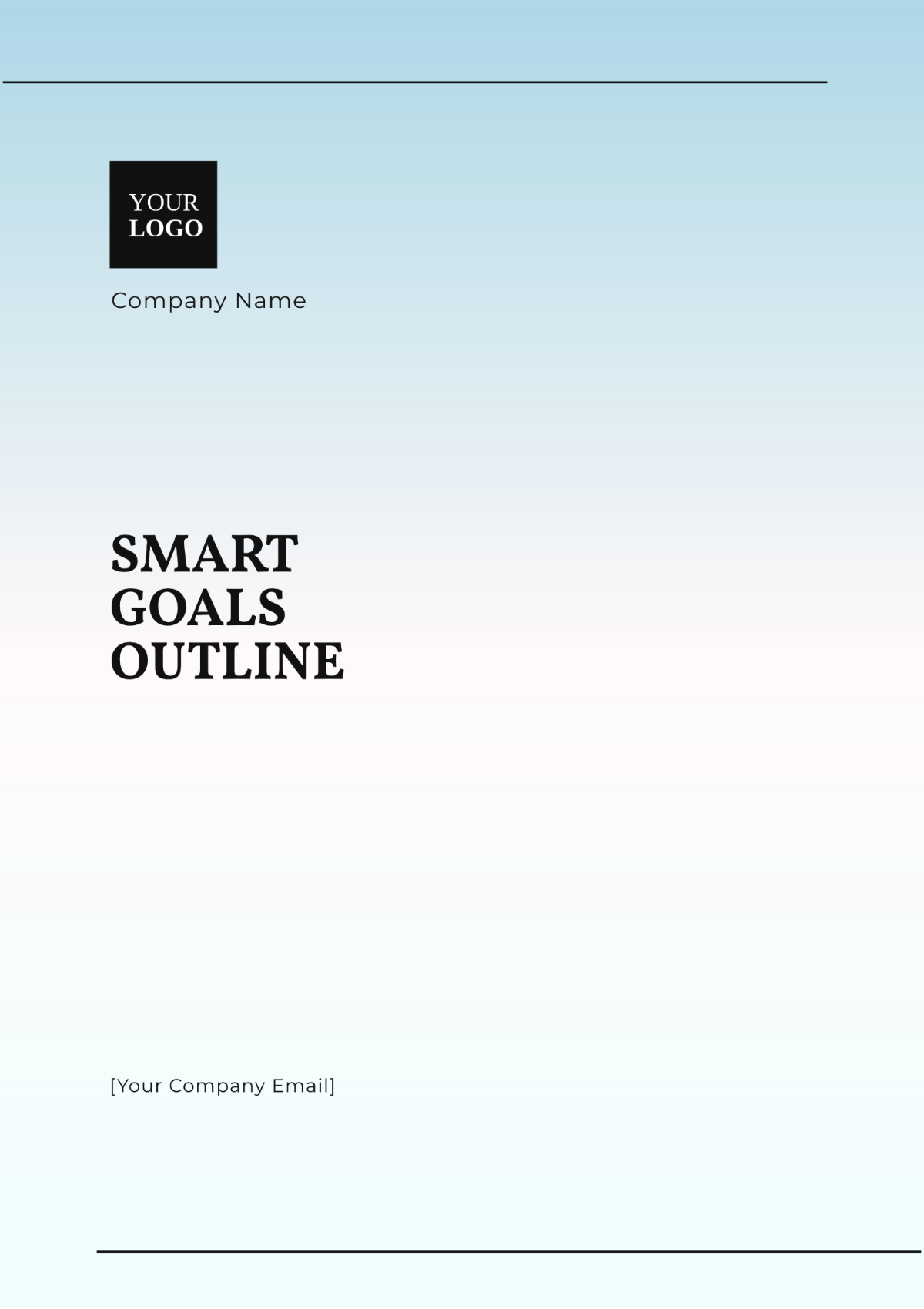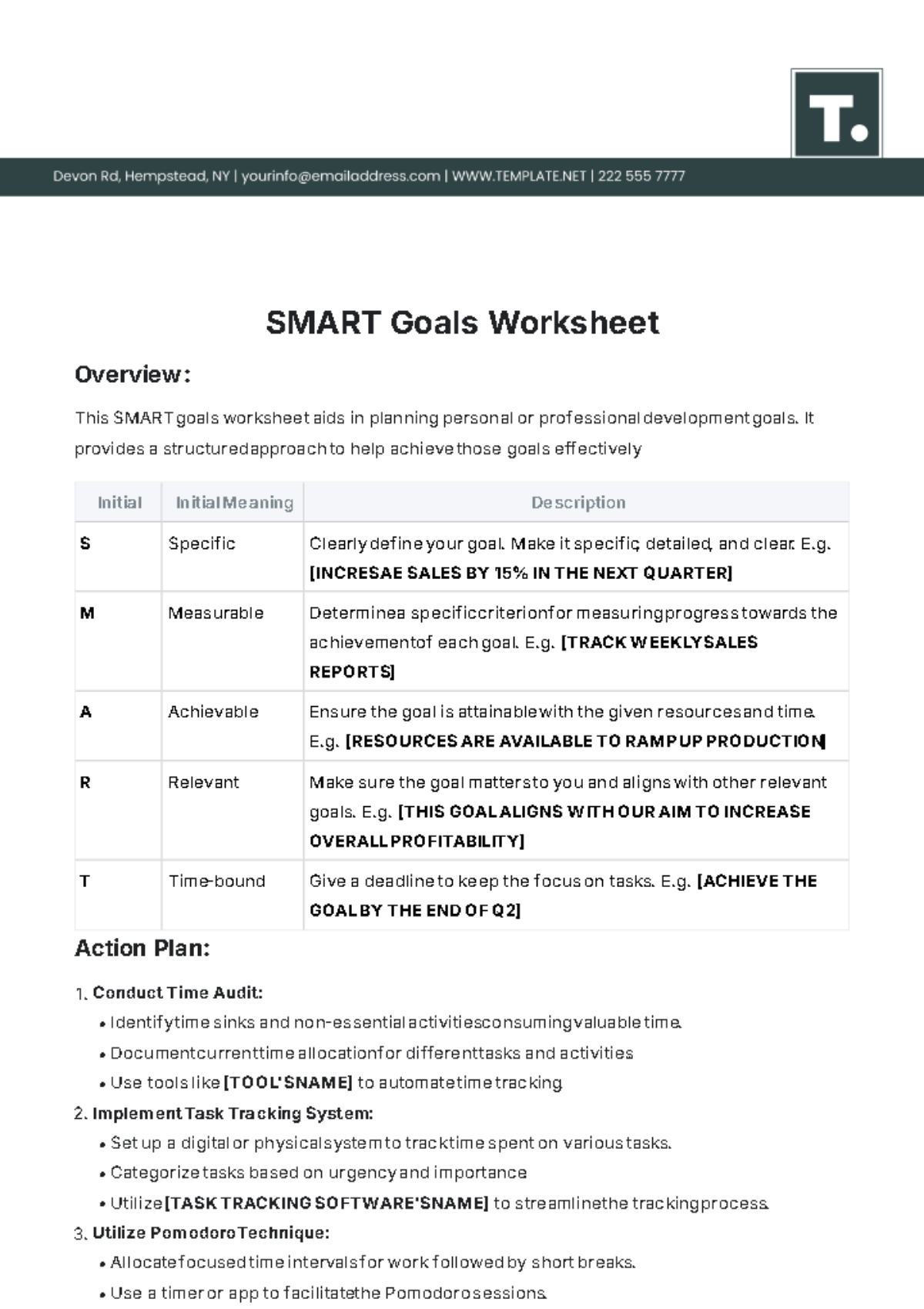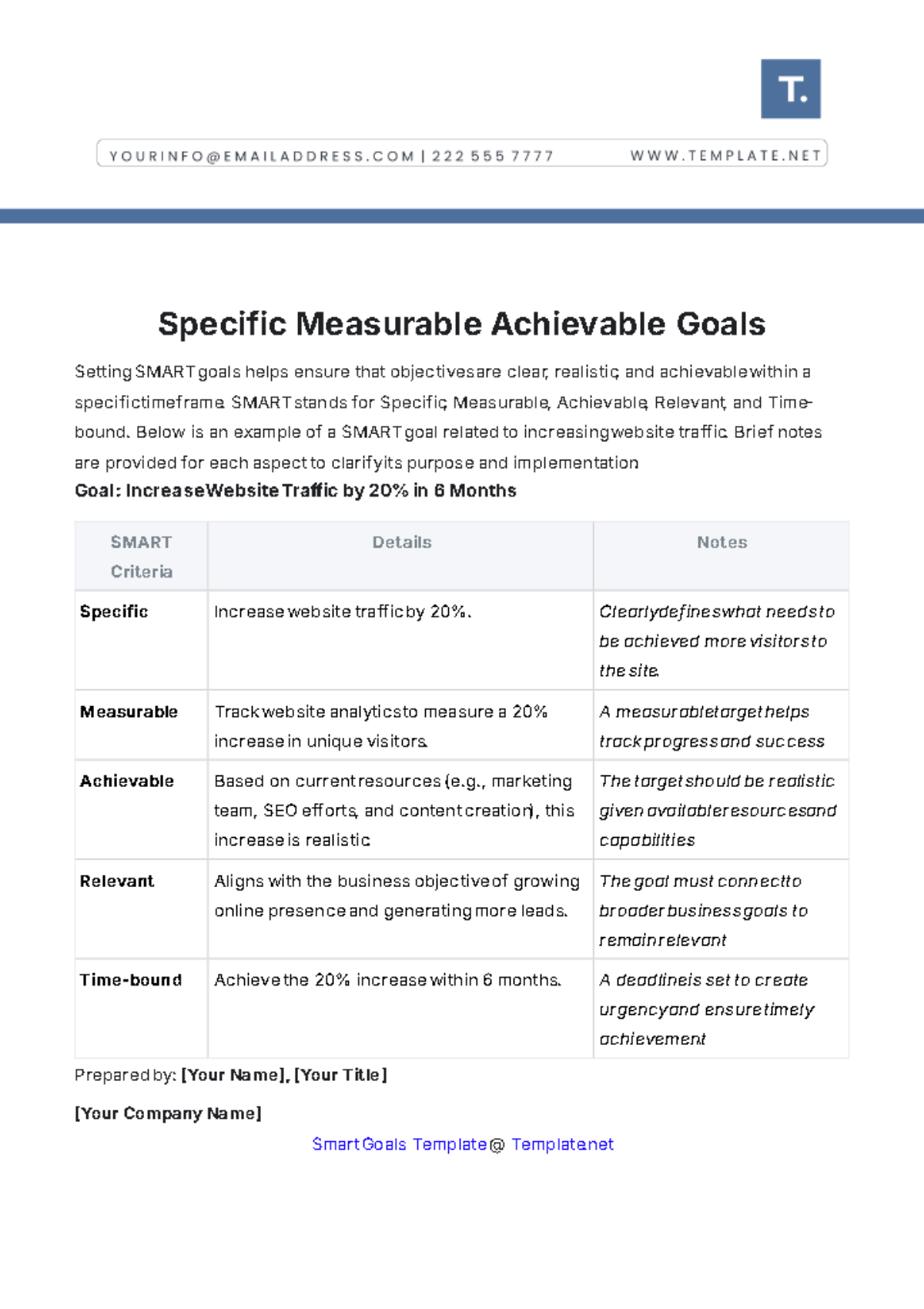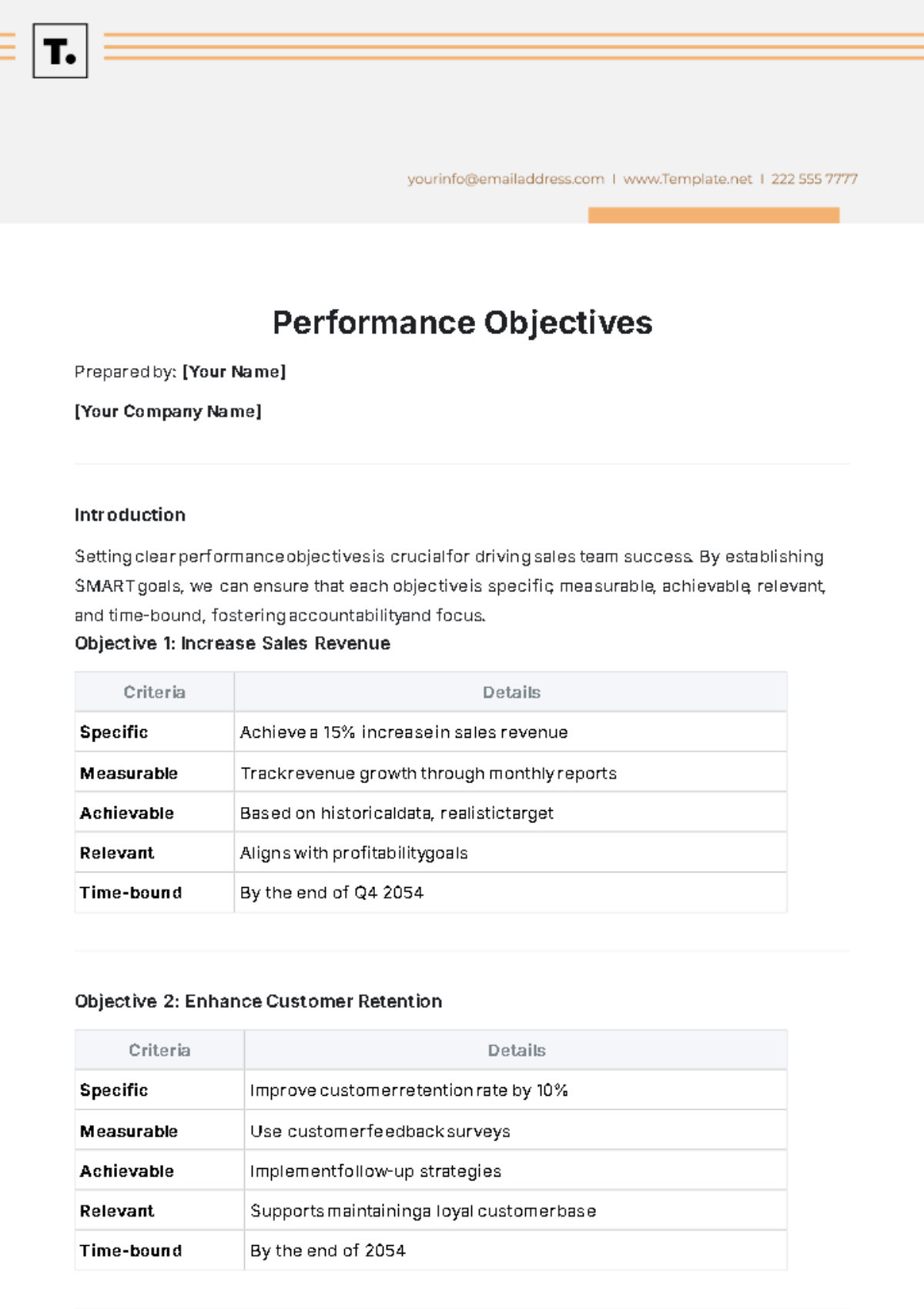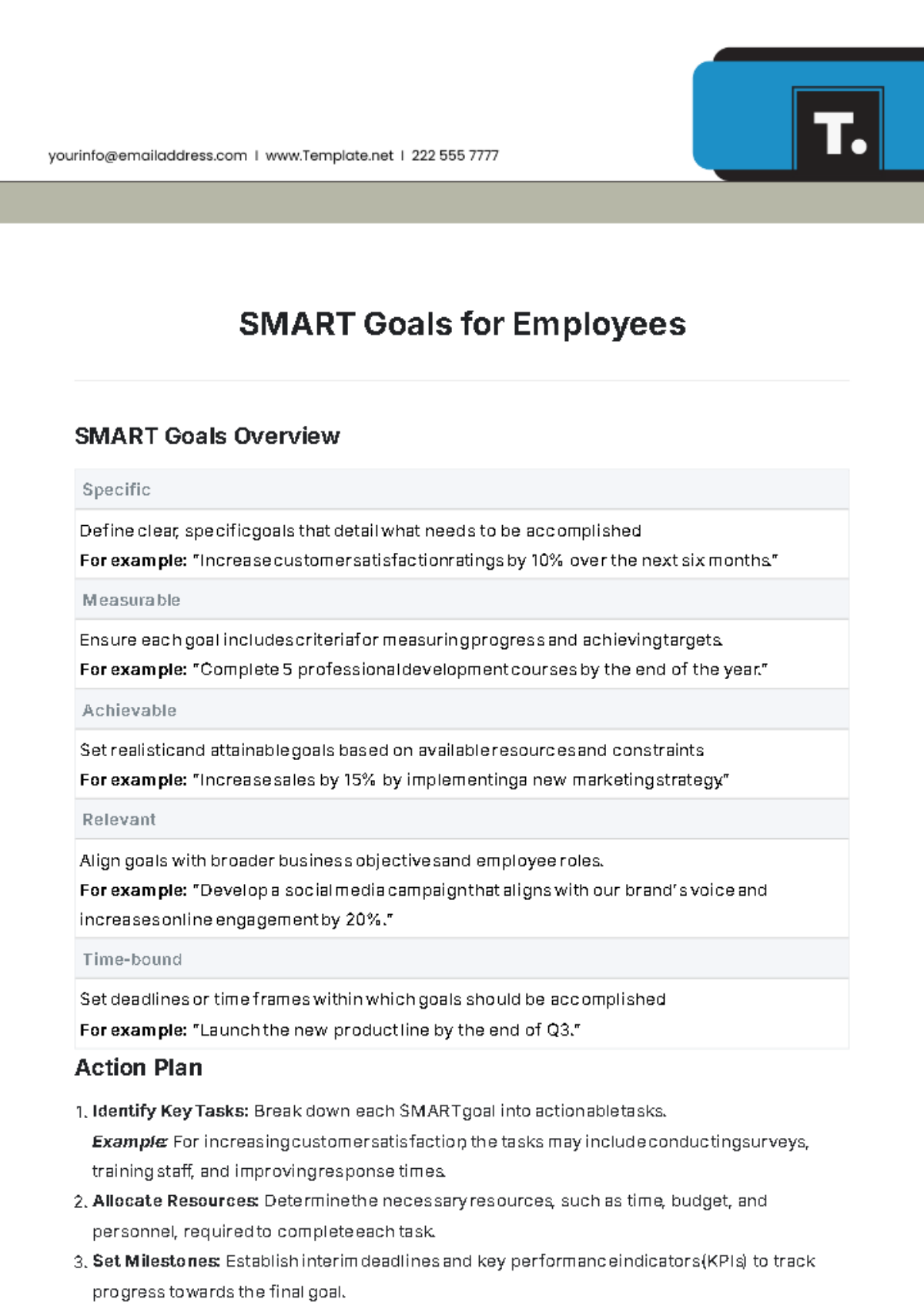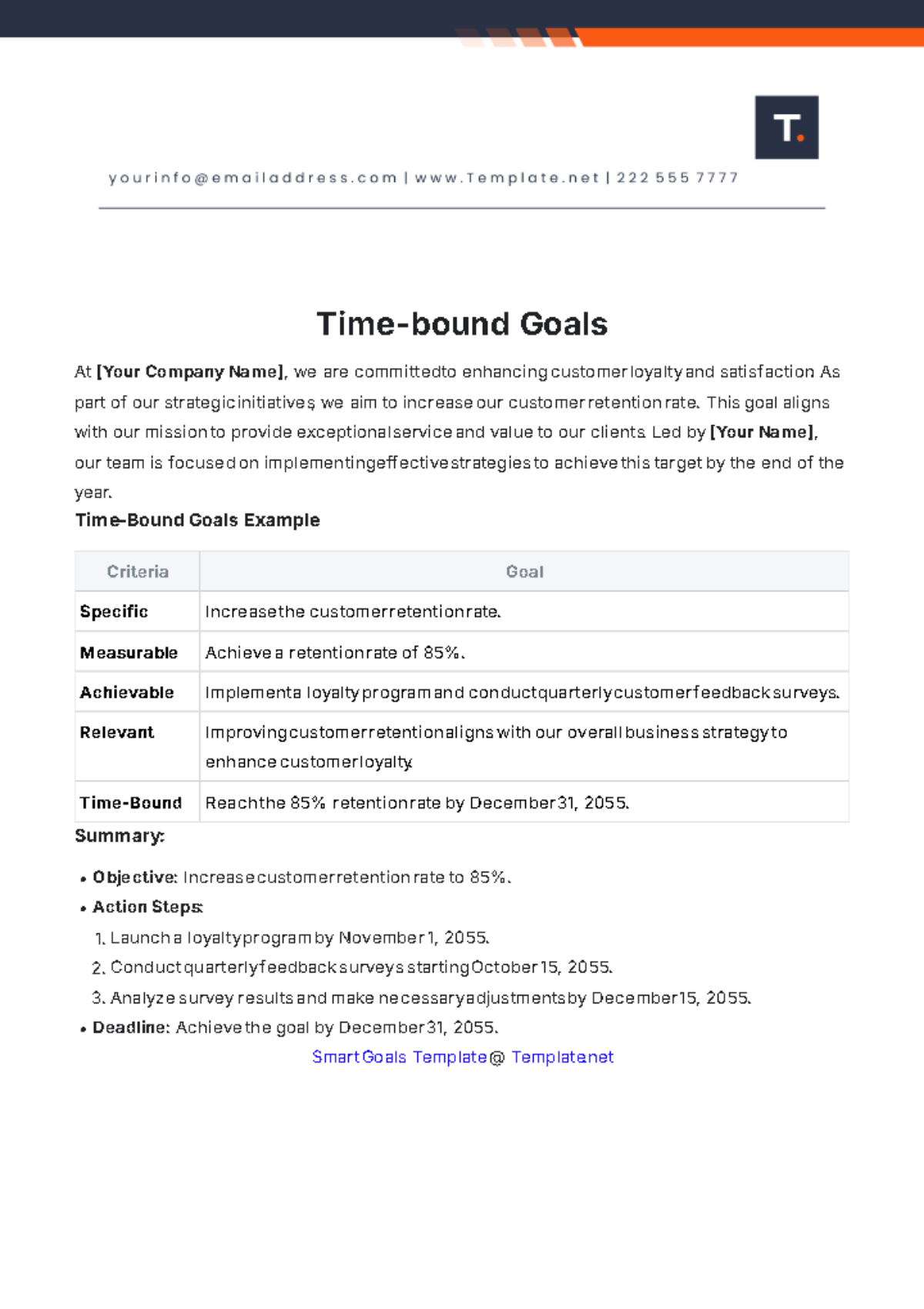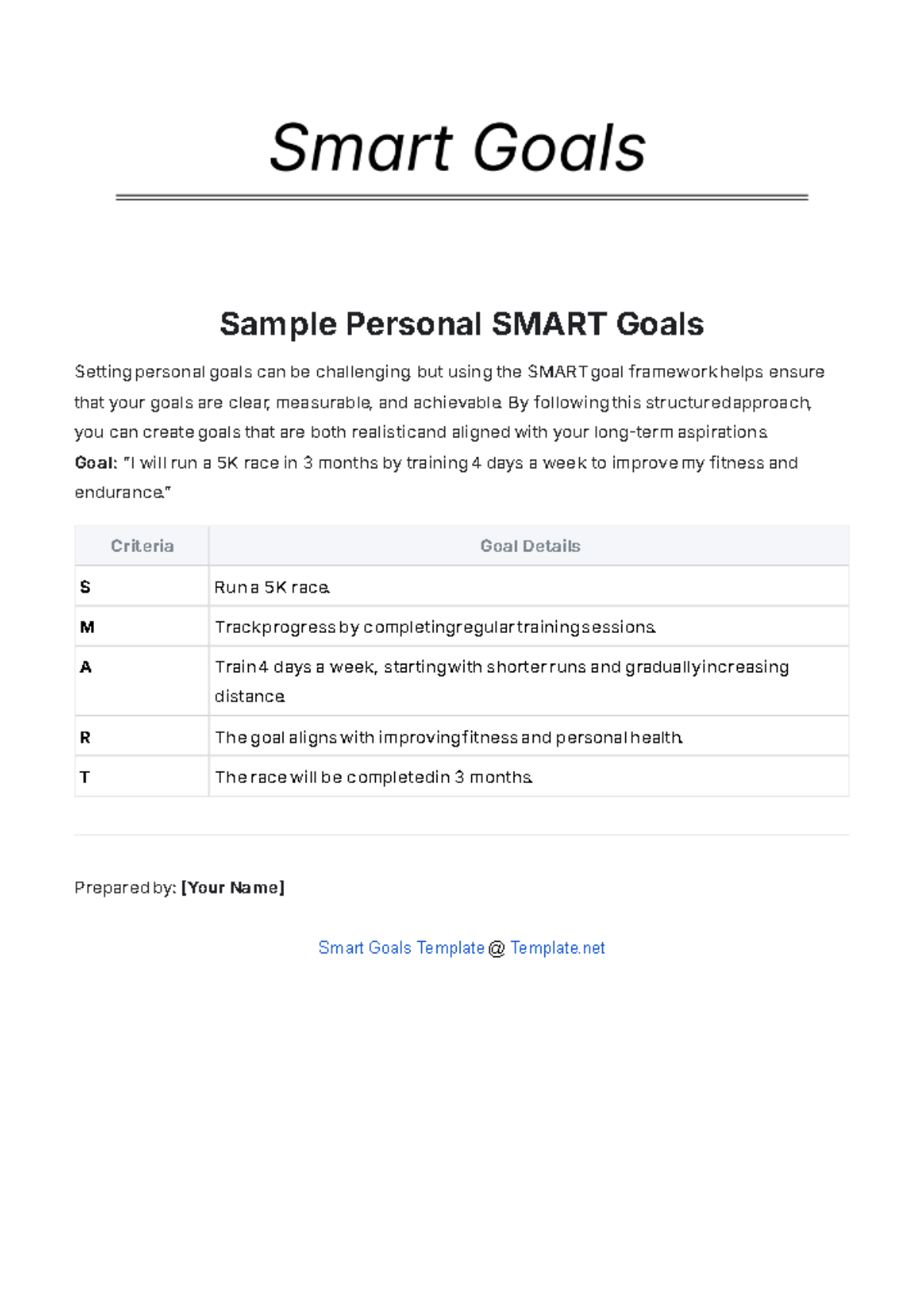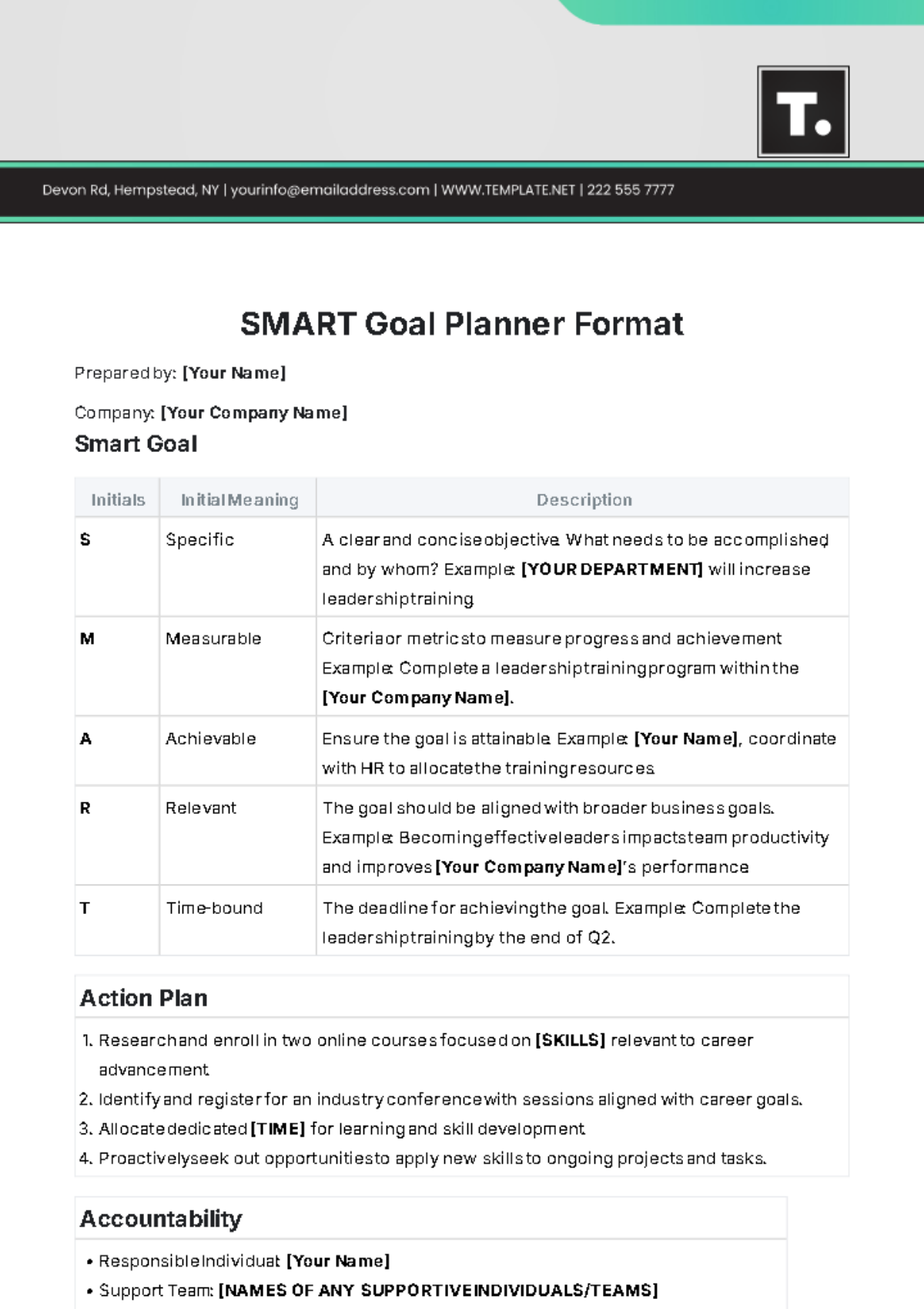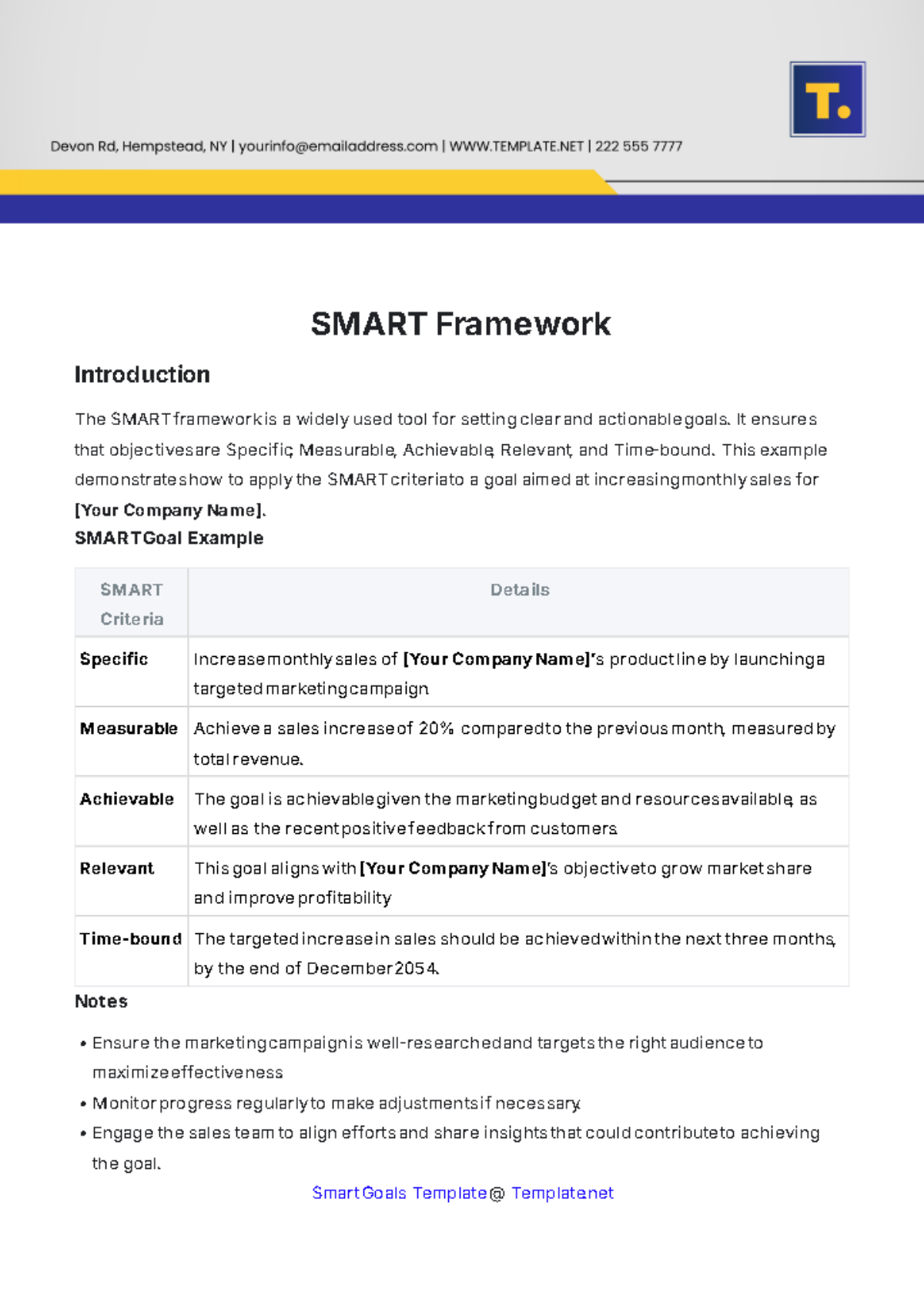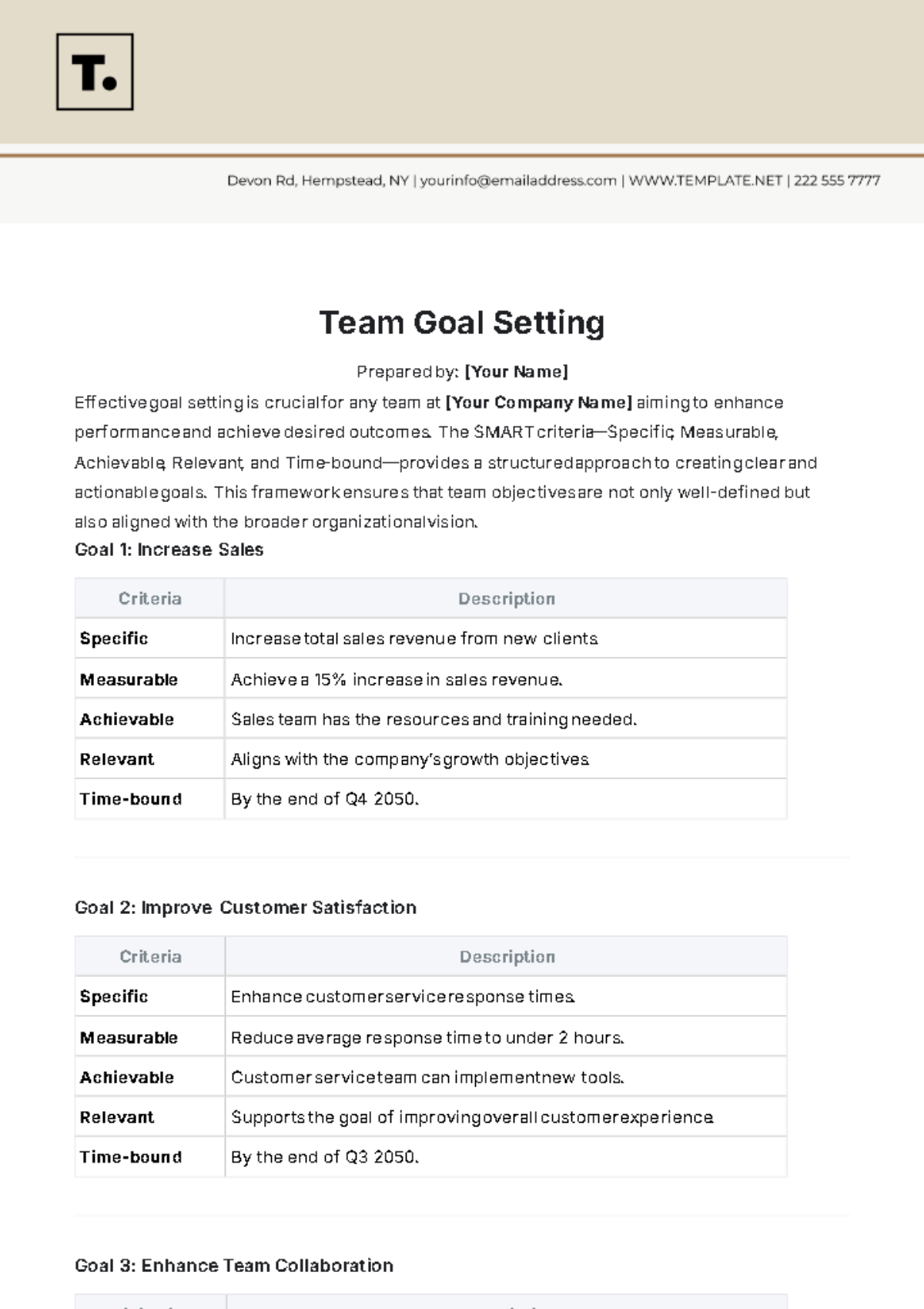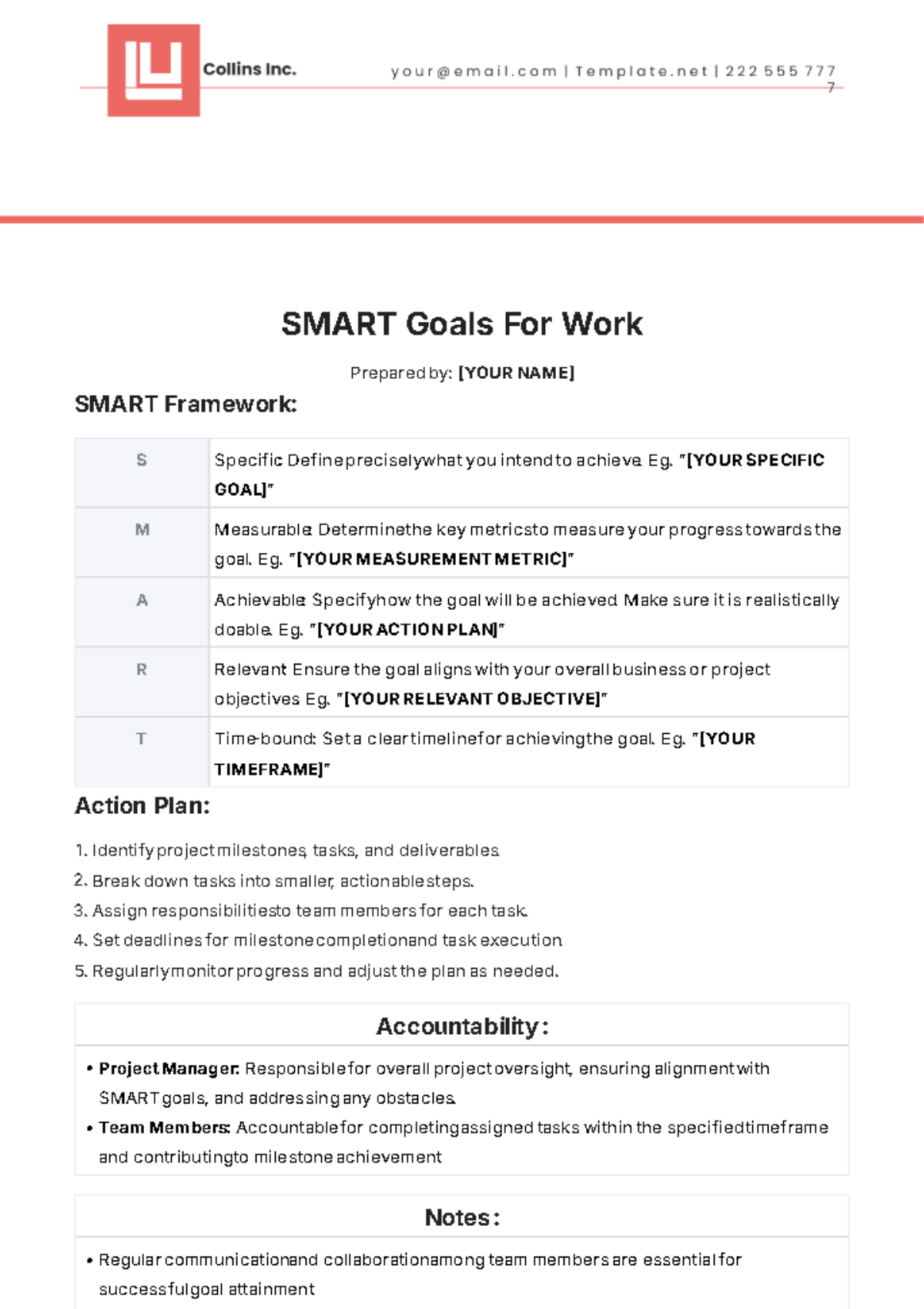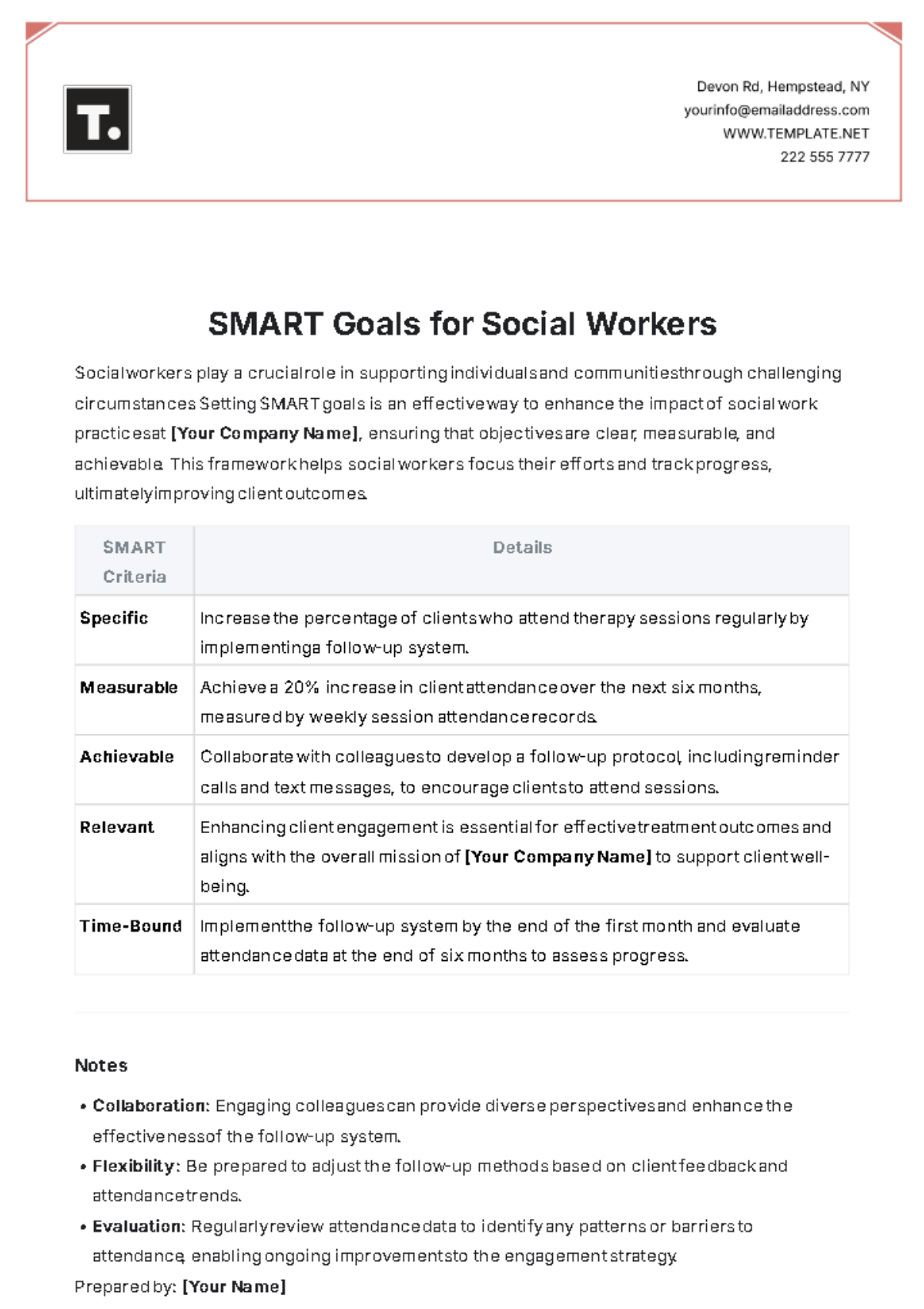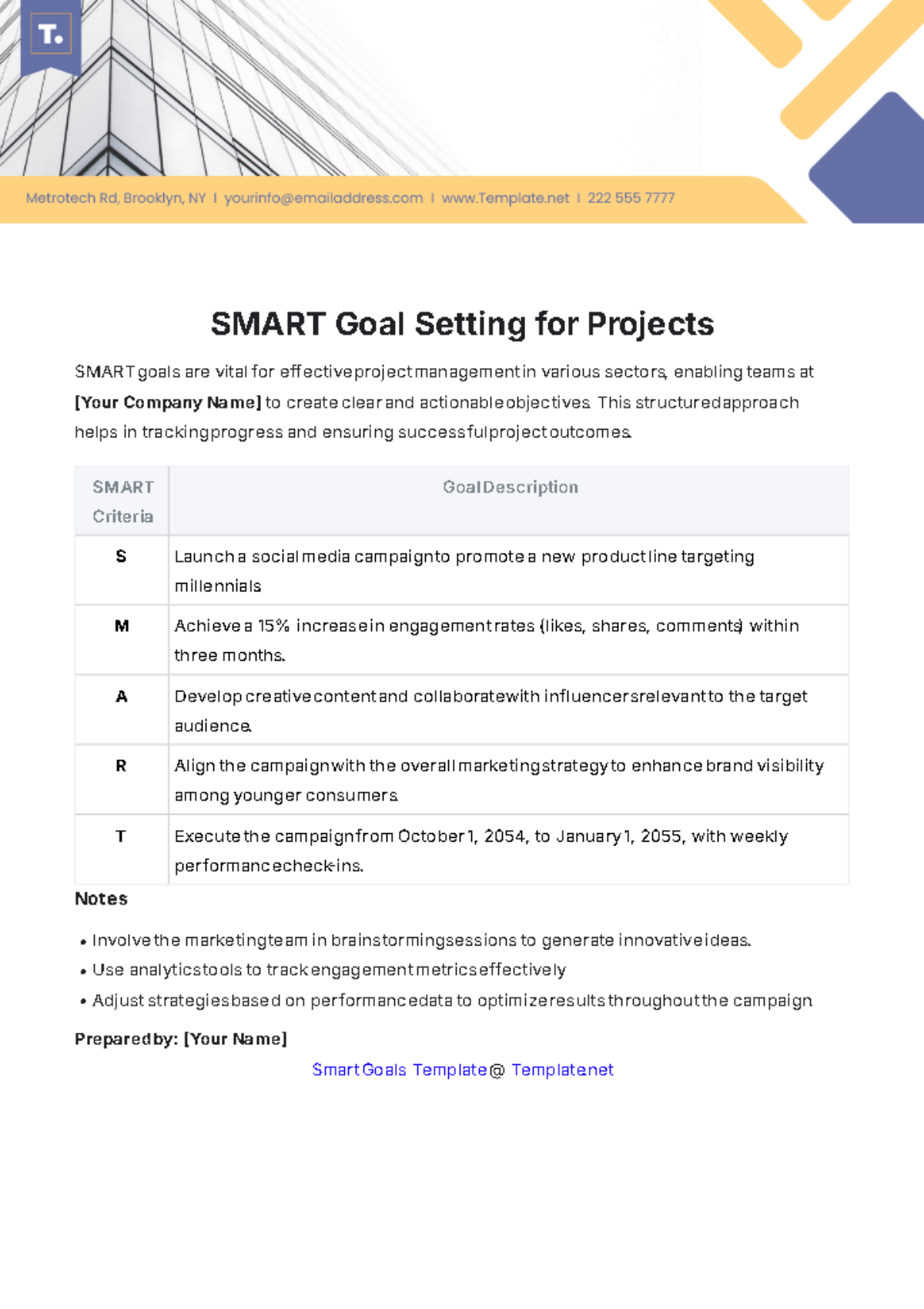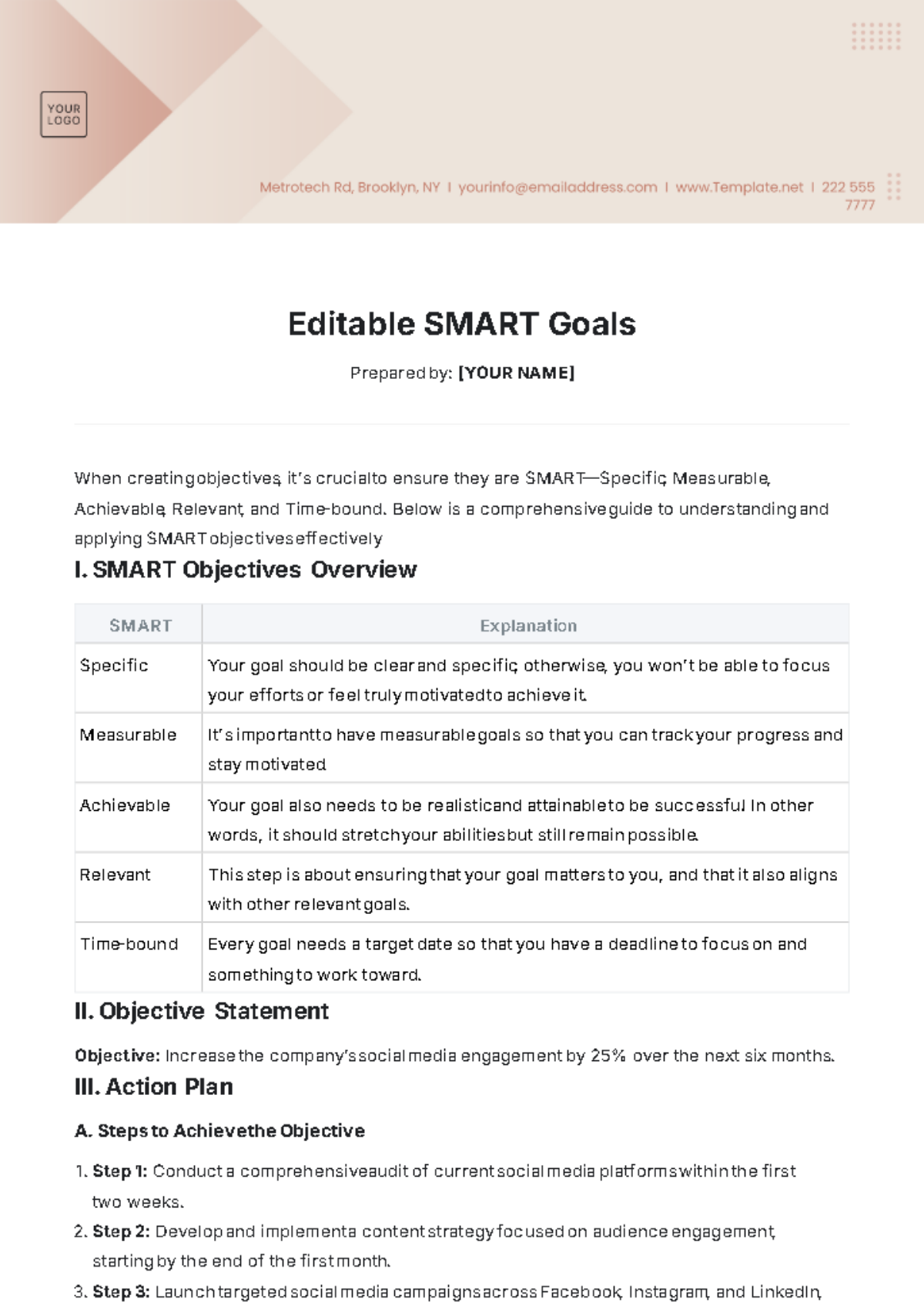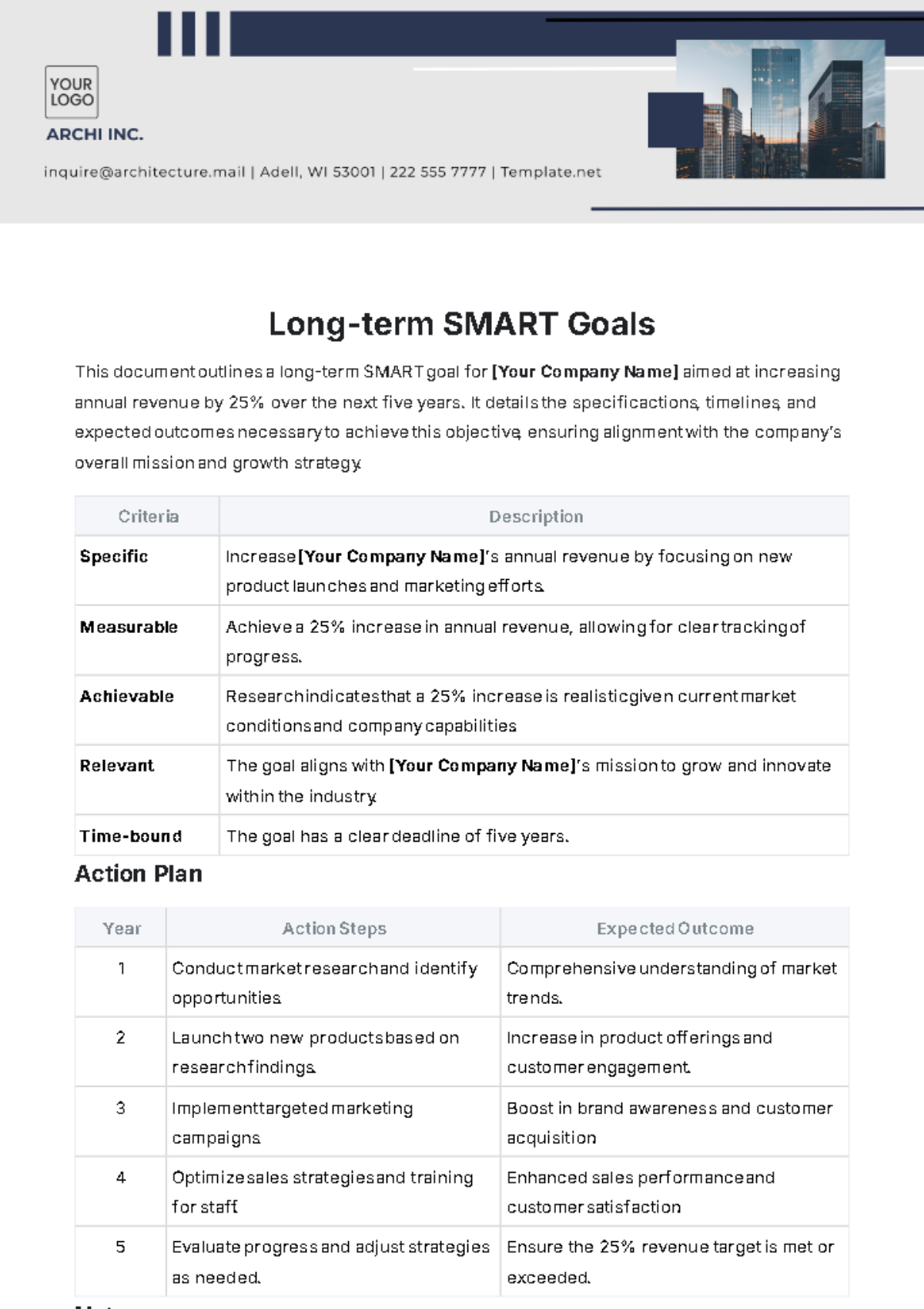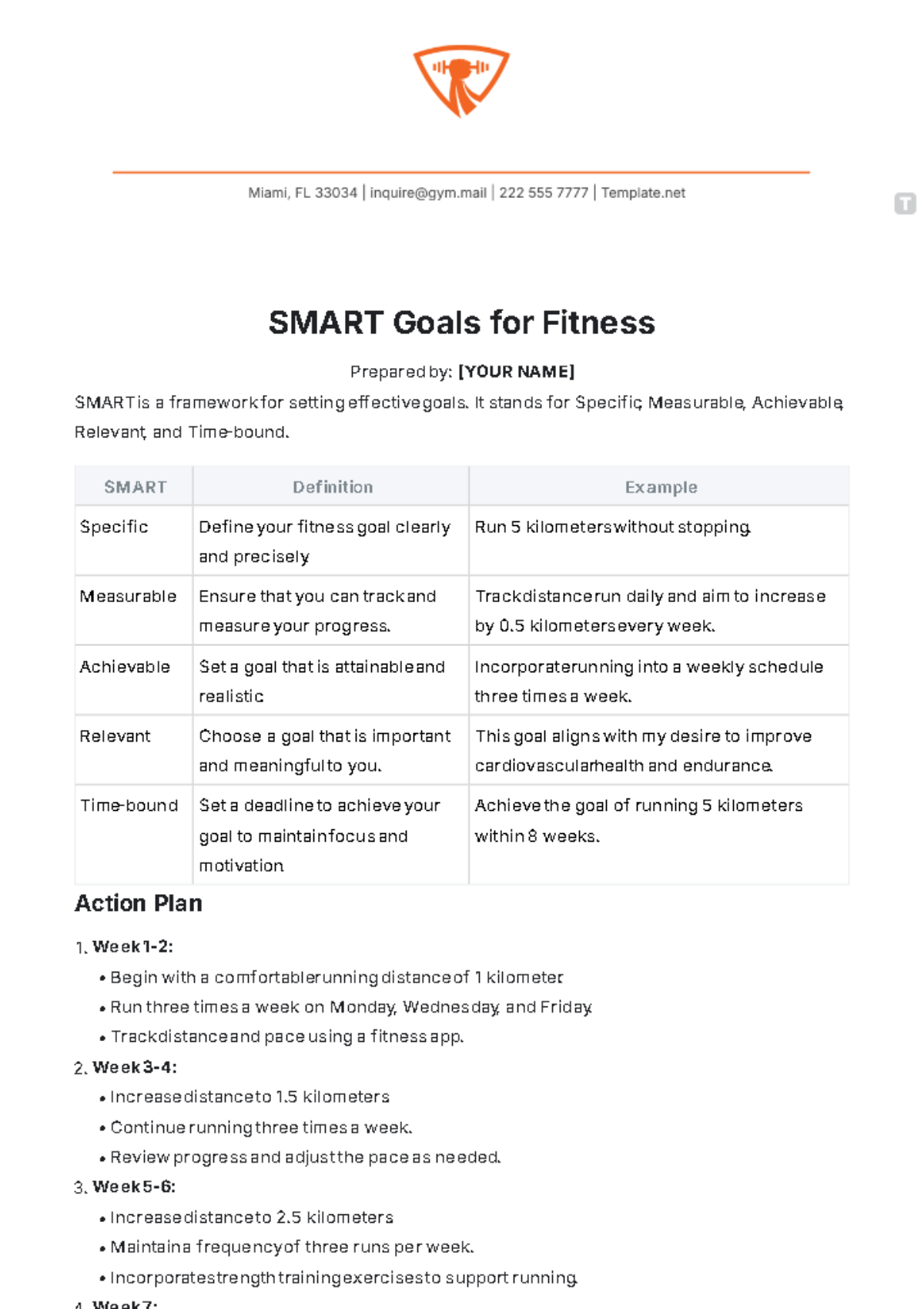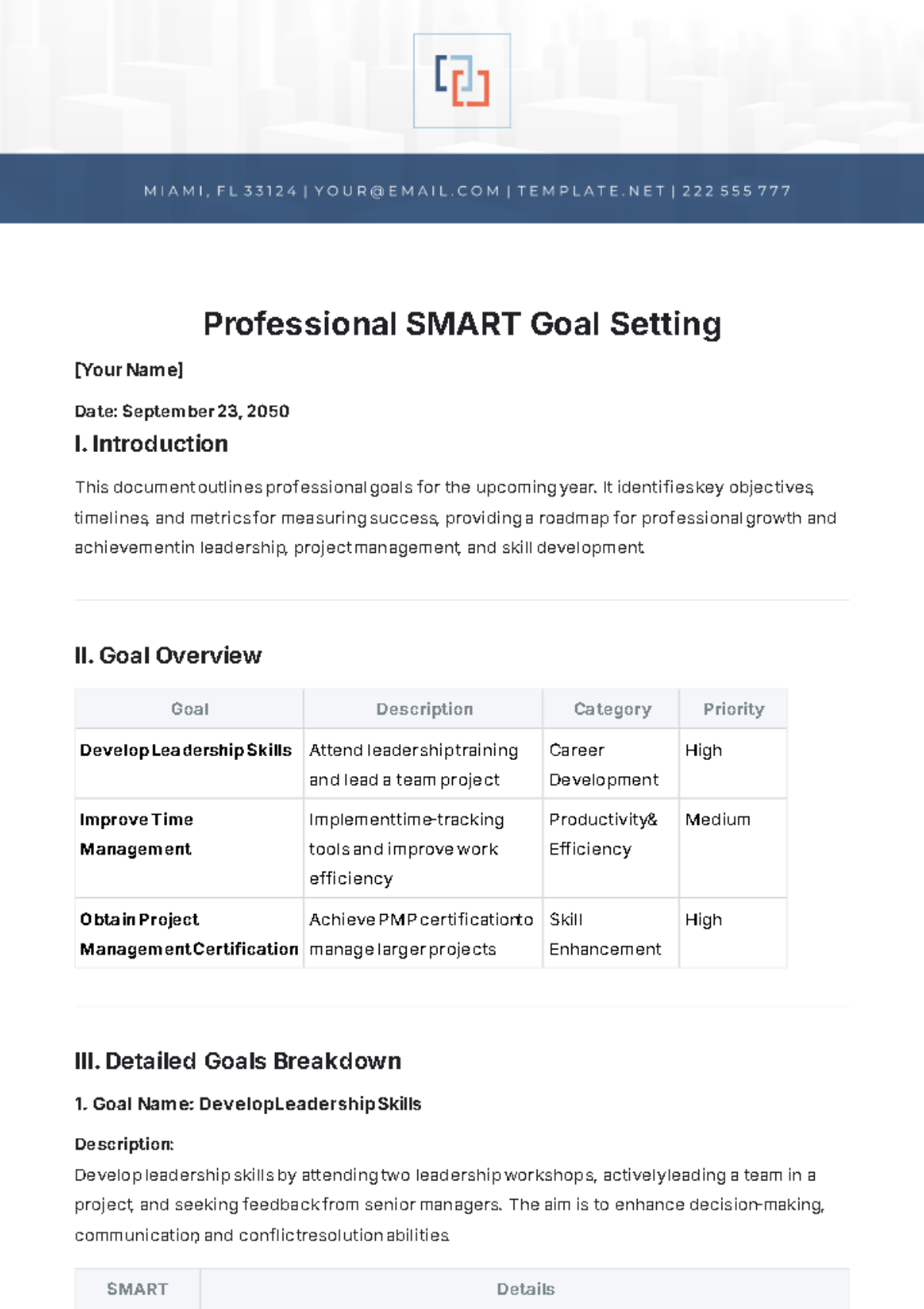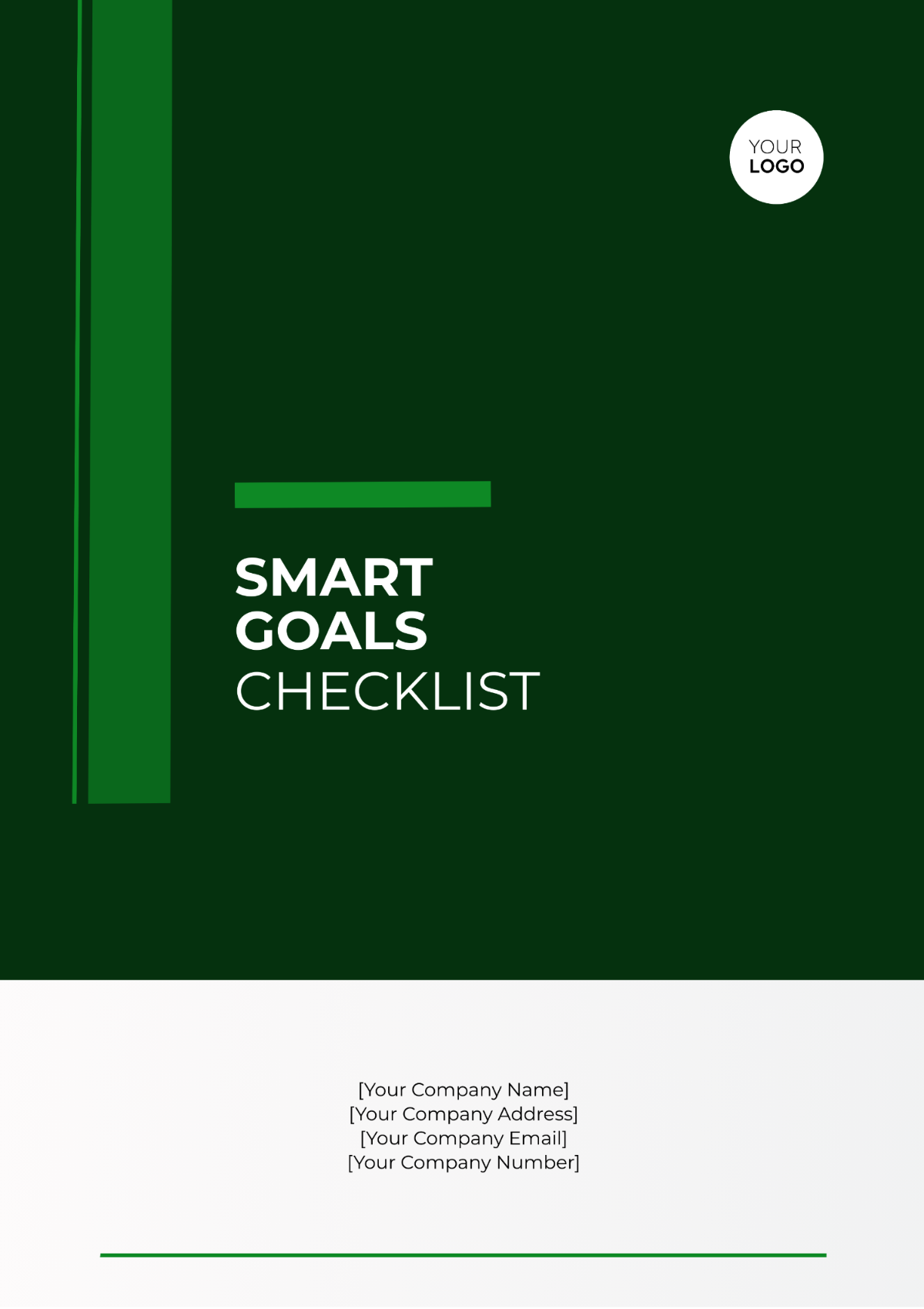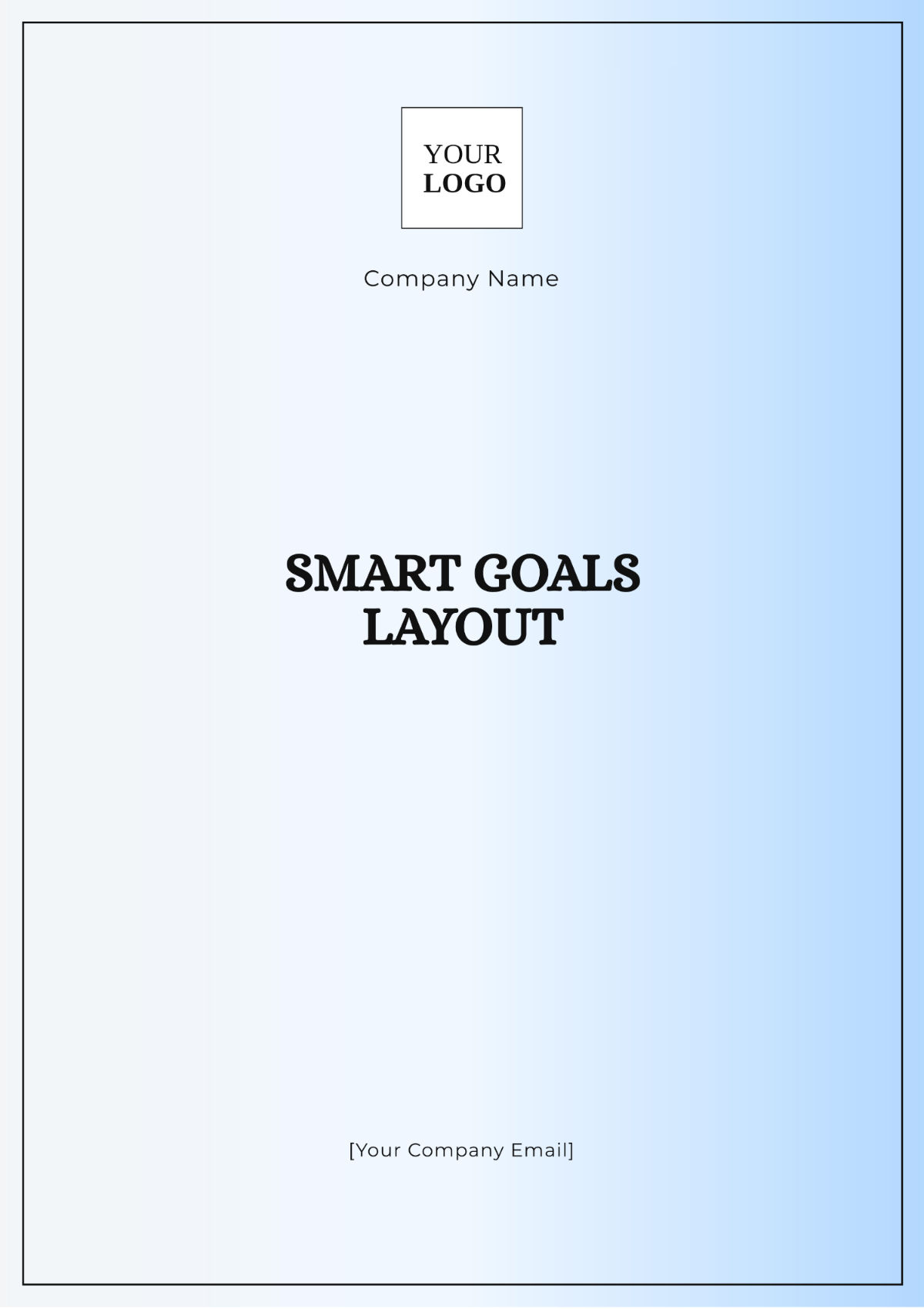SMART Goals for Risk Management
Prepared by: [YOUR NAME]
Company: [YOUR COMPANY NAME]
SMART Goals Template
Section | Description |
|---|---|
Specific | Define your risk management objectives clearly stating what you intend to achieve, why is it important, and how you plan to do it. For example, "[Your Specific Goal]" |
Measurable | Identify the key indicators of progress towards your goal. This could include quantifiable outcomes such as reduction in number of risks, improving key metrics, etc. Mention your measurable outcomes: "[Your Measurable Goal]" |
Achievable | Ensure that your goals are realistic and attainable given your [Your Department]'s resources and constraints. State how you can achieve your goal: "[Your Achievable Goal]" |
Relevant | Confirm your goal alignment with the overarching organizational strategies. Make sure your goal is compatible with other departments' objectives in the organization. Describe how your goal contributes to organizational objectives: "[Your Relevant Goal]" |
Time-bound | Establish a timeline for achieving your goal, this should include a start date and end date. Specify your time frame: "[Your Time bound Goal]" |
Action Plan
Risk Identification:
Conduct comprehensive risk assessments to identify potential risks across projects, operations, and functions.
Prioritize risks based on their likelihood and impact on organizational objectives.
Risk Mitigation Strategies:
Develop risk mitigation strategies and action plans to address identified risks.
Assign responsibilities and allocate resources for implementing mitigation measures.
Monitoring and Review:
Establish monitoring mechanisms to track the effectiveness of risk mitigation actions.
Conduct regular reviews to assess the status of identified risks and update mitigation strategies as necessary.
Accountability
Roles and Responsibilities:
Clearly define roles and responsibilities for risk management activities within the organization.
Hold accountable individuals or teams responsible for implementing risk mitigation actions.
Reporting and Communication:
Establish reporting mechanisms to provide regular updates on risk management activities to senior management and stakeholders.
Foster open communication channels to encourage reporting of emerging risks and issues.
Notes
Continuous Improvement: Emphasize the importance of continuous improvement in risk management practices to adapt to evolving risks and challenges.
Training and Awareness: Provide training and awareness programs to enhance risk management capabilities across the organization.
Integration with Strategic Planning: Ensure alignment of risk management goals with overall organizational strategies and objectives.


